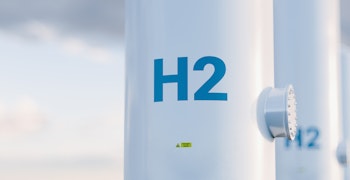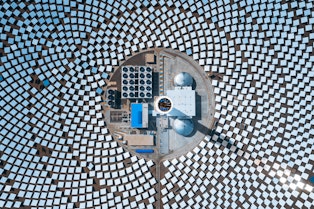
By Xavier Lara
What do you do when a large part of your economy depends on fossil-fuel exports and the world is getting rid of its carbon habit? This is the conundrum facing Australia over the next couple of decades as the world’s major markets race to reduce carbon emissions.
Coal and gas are currently Australia’s second and third-largest sources of export revenue, according to figures from the Australian government.
In the 2019 to 2020 financial year, these amounted to 21.5% of exports by value, practically the same amount as iron ore, the country’s top export commodity.
Add Australia’s ninth-most valuable export, crude petroleum, into the mix and fossil fuels represent more than 23% of revenue inflows for the country—more than any other source of revenues.
This means that almost a quarter of Australian exports are at risk as the global economy embraces moves to achieve net-zero emissions by 2050. And these are not exports that are likely to be salvaged through some piece of technological wizardry.
While there is much interest in the coal industry in developing high-efficiency, low-emissions plants, research suggests ‘clean coal’ will not be viable until around 2030, by which time global energy systems will likely be adapting to a renewables-first model of generation.
Similarly, the emissions reductions that can be achieved with natural gas can only go so far. At some point over the next decade or two, industry will have to move to low-carbon alternatives.
Sensibly, Australian policymakers appear to be aware of these headwinds and are preparing to dominate the energy world of the future with a new, low-carbon fuel: hydrogen.
The gas can be made with low emissions by combining current steam methane reforming of natural gas with carbon capture and storage.
But perhaps the most promising pathway for Australia, given the country’s abundant solar and wind resources, is to create green hydrogen via water electrolysis, using renewable energy.
In 2019, Australia launched a hydrogen strategy with 57 actions focused on national coordination, developing production capacity, supporting local demand, responsive regulation, international engagement, research and development, skills and workforce, and community confidence.
“Australia has the resources and the experience to take advantage of increasing global momentum for clean hydrogen and make it our next energy export,” says the strategy.
“There is potential for thousands of new jobs, many in regional areas—and billions of dollars in economic growth between now and 2050. We can integrate more low-cost renewable generation, reduce dependence on imported fuels, and help reduce carbon emissions.”
It is not just the authorities that are keen on developing hydrogen in Australia. The prospect of taking a leading role in what is largely seen as the low-carbon fuel of tomorrow has attracted significant corporate interest too.
One of the strongest of Australia’s hydrogen hopefuls is Fortescue Future Industries (FFI), a division of Fortescue Metals Group, which is looking to produce 15 million tons of green hydrogen by 2030 and is expected to announce final investment decisions on its first projects before the end of 2023.
FFI’s green hydrogen ambitions alone will require around 200 GW of new renewable energy generation capacity, more than all the coal-fired power in Australia today, according to Bloomberg.
Most of that will probably be in the form of PV and wind, the two lowest-cost types of renewable energy today. Australia is well positioned for the development of both, with considerable solar and wind resources across the country. But what happens at night, particularly if the wind has dropped?
For maximum efficiency, and minimum cost, the electrolyzers used for green hydrogen production need to be kept running for as long as possible. Stopping them once the sun goes down will reduce production and drive up the price of the hydrogen produced.
Batteries, of course, can go some way to solving this problem. Lithium-ion battery systems are a relatively inexpensive form of storing a few hours worth of energy. They can cost-effectively deliver power in bulk for two, three or maybe four hours.
Beyond this, though, they start to get prohibitively expensive because they scale in a way that is directly related to storage capacity. In essence, you pay two times as much to get twice a given storage duration.
Alongside PV, however, there is another solar technology that is great at storing masses amounts of energy in bulk. Concentrated solar power or CSP captures heat, rather than directly converting sunlight to electricity.

This heat can be stored in massive vats of molten salt and used to drive a steam turbine for hours on end. Recently developed CSP plants come with more than eight hours of storage as standard.
The technology has higher upfront costs than PV and batteries, but when it comes to long-duration, low-carbon energy storage it is hard to beat. This could be the key to getting Australia to the front of the queue in the nascent global hydrogen economy.
For maximum efficiency, we would propose creating hybrid plants where daytime energy for electrolysis comes from low-cost PV, and then CSP’s thermal storage powers electrolyzers overnight.
Such a hybrid setup would be highly cost-effective because the balance of plant costs, including civil engineering, power systems and so on, would be shared.
Both technologies would benefit from Australia’s high levels of solar irradiation, meaning no other forms of renewable generation would be required.
Plus, PV and CSP are highly resilient technologies since damage to a single solar panel or heliostat would not greatly affect the operation of the electrolysis plant.
Furthermore, project developers would have the option of using hybrid CSP-PV plants solely as a power source for hydrogen production or of connecting these generation assets to the grid, for example, to take advantage of high energy pricing periods.
At Pacific Green, we are looking forward to helping with Australia’s green hydrogen plans. We are experts in CSP and PV and have modelled the economics of green hydrogen for ammonia production in the Andes.
To find out how we can help with your green hydrogen plans, contact us now.
Publish date: 21 December, 2022